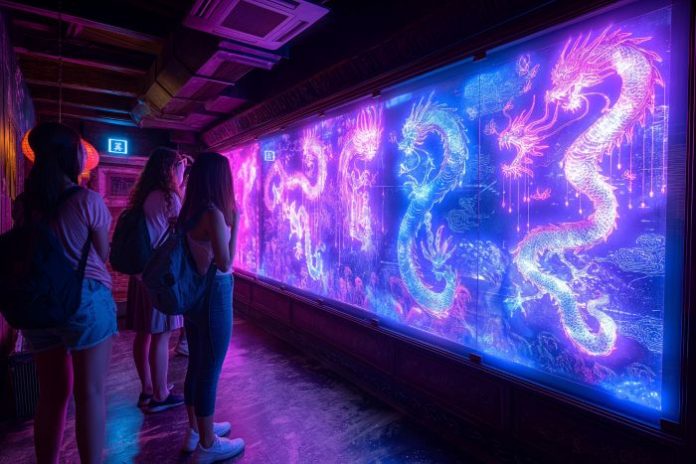If you’re planning an event, upgrading a storefront, or redesigning a commercial space, a led wall can completely change the way your audience experiences content. But one of the most common questions people ask is: What size LED wall do I need? Choosing the right dimensions isn’t just about filling a wall—it’s about finding the ideal balance between impact, space, visibility, and budget. In this guide, we’ll explore the key factors to consider when selecting the perfect LED wall for your space, whether it’s for a trade show, church, concert, retail store, or corporate setting.
Table of contents
Understand Your Viewing Distance
The first and most important factor when choosing an LED wall size is the distance from which people will be watching it. LED walls are made of small light-emitting diodes grouped into pixels, and the “pixel pitch”—which is the distance between the centers of two adjacent pixels—affects how clear the image looks up close.

As a general rule:
- For close-up viewing (4 to 10 feet), like in retail spaces or conference rooms, a smaller LED wall with a low pixel pitch (1.5mm to 2.9mm) provides sharp detail without pixelation.
- For medium distance viewing (10 to 30 feet), such as in houses of worship or school auditoriums, a mid-sized LED wall with pixel pitch around 3.9mm works well.
- For far viewing (30+ feet), like in concerts or outdoor advertising, you can go larger with a higher pixel pitch (5mm or more) since clarity is less of a concern at long distances.
The size of the wall for your space should correlate with how far away your audience will be. Bigger isn’t always better if your viewers are close—you’ll just end up with a massive, pixelated screen.
Measure the Available Space
Before choosing an LED wall, take detailed measurements of the space where it will be installed or placed. Consider:
- Ceiling height
- Wall width
- Mounting options (wall-mount, truss system, floor-standing)
- Access for maintenance and cables
Make sure to leave clearance space on all sides of the LED wall, especially for ventilation and service access. For example, if your wall is 12 feet wide, it may not be practical to install a 12-foot-wide screen edge-to-edge. A better option might be a 10-foot wall, leaving room for framing and wiring.
Also, consider any obstructions like doors, windows, or pillars that may limit visibility or interfere with the installation.
Consider the Content You’ll Display
What you plan to show on your LED wall should influence its size and aspect ratio. Common use cases include:
- Video presentations or movies: A 16:9 aspect ratio (widescreen) is ideal for playing HD or 4K content.
- Digital signage or advertising: Tall, vertical walls can be effective in retail and corporate spaces.
- Live feeds or event visuals: Larger panoramic formats or modular displays are useful for concerts and stage events.
The size of the content should match the resolution and scale of the screen. Don’t stretch a standard HD video across an ultra-wide wall unless the resolution supports it—otherwise the image will appear blurry or distorted.
Think About the Environment
Will your LED wall be used indoors or outdoors? Outdoor walls typically need to be larger for visibility, and they’re built to withstand sunlight, rain, and wind. They also have higher brightness ratings to remain visible during the day.
Indoor walls, on the other hand, can be smaller with finer resolution and don’t require weatherproofing. They’re ideal for environments like:
- Meeting rooms
- Lobbies
- Retail stores
- Indoor stages or churches
If your space has high ambient light, even indoors, you may need a larger and brighter screen to ensure legibility.
Factor in the Audience Size
The size of your audience also impacts the required LED wall size. For instance:
- Small meetings (10–50 people): A modest LED wall (e.g. 8×5 feet) is enough to display presentations or videos.
- Medium gatherings (50–200 people): A 10×6 or 12×7 screen gives better visibility from all angles.
- Large venues (200+ attendees): You may need a massive wall (e.g. 20×10 feet or more), sometimes even multiple screens, depending on the layout.
In churches and performance venues, larger screens often serve dual purposes: enhancing visibility and adding dramatic visual impact.
Don’t Forget Your Budget
Larger LED walls come with higher costs—not just in materials but also installation, support structures, cabling, and power consumption. Choosing a wall that fits your budget means considering both the size and pixel pitch. For instance:
- A large wall with high resolution will be significantly more expensive.
- A mid-sized wall with moderate resolution might provide the best balance of cost and performance.
Modular LED panels make it possible to scale your display based on budget. You can start with a smaller configuration and expand later.
Use Case Examples
To better visualize sizing decisions, here are a few example scenarios:
- Retail Storefront: A 6×4 foot indoor LED wall near the entrance to display promotions, with a 2.5mm pitch for close-up detail.
- Church Stage: A 16×9 foot screen behind the pulpit with a 3.9mm pitch, viewable from 50+ feet away.
- Outdoor Event: A 20×10 foot LED wall with 5.9mm pitch for live feeds and sponsor ads, bright enough to be seen under daylight.
Consult a Professional Installer for a LED Wall for your Space
When in doubt, it’s always wise to consult with an LED wall provider who can help you:
- Analyze your space
- Recommend the ideal size and pitch
- Offer layout mockups
- Plan power and structural requirements
They’ll also guide you through options like curved designs, corner wraps, or even interactive walls, which may change the size or shape needed.
Choosing the right size LED wall for your space is a mix of art and science—but with the right approach, you’ll end up with a display that looks incredible and performs exactly as you need it to.











